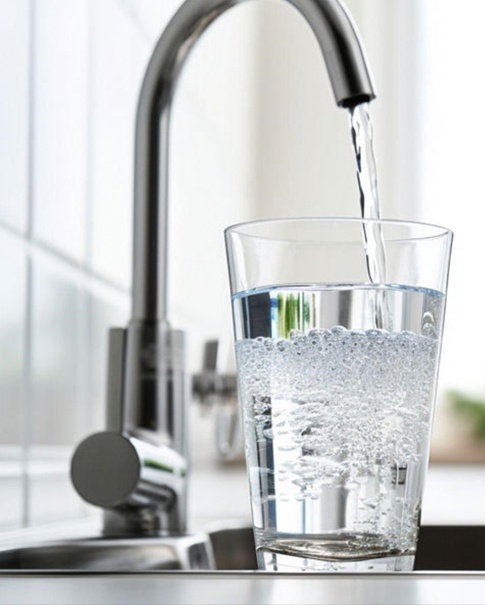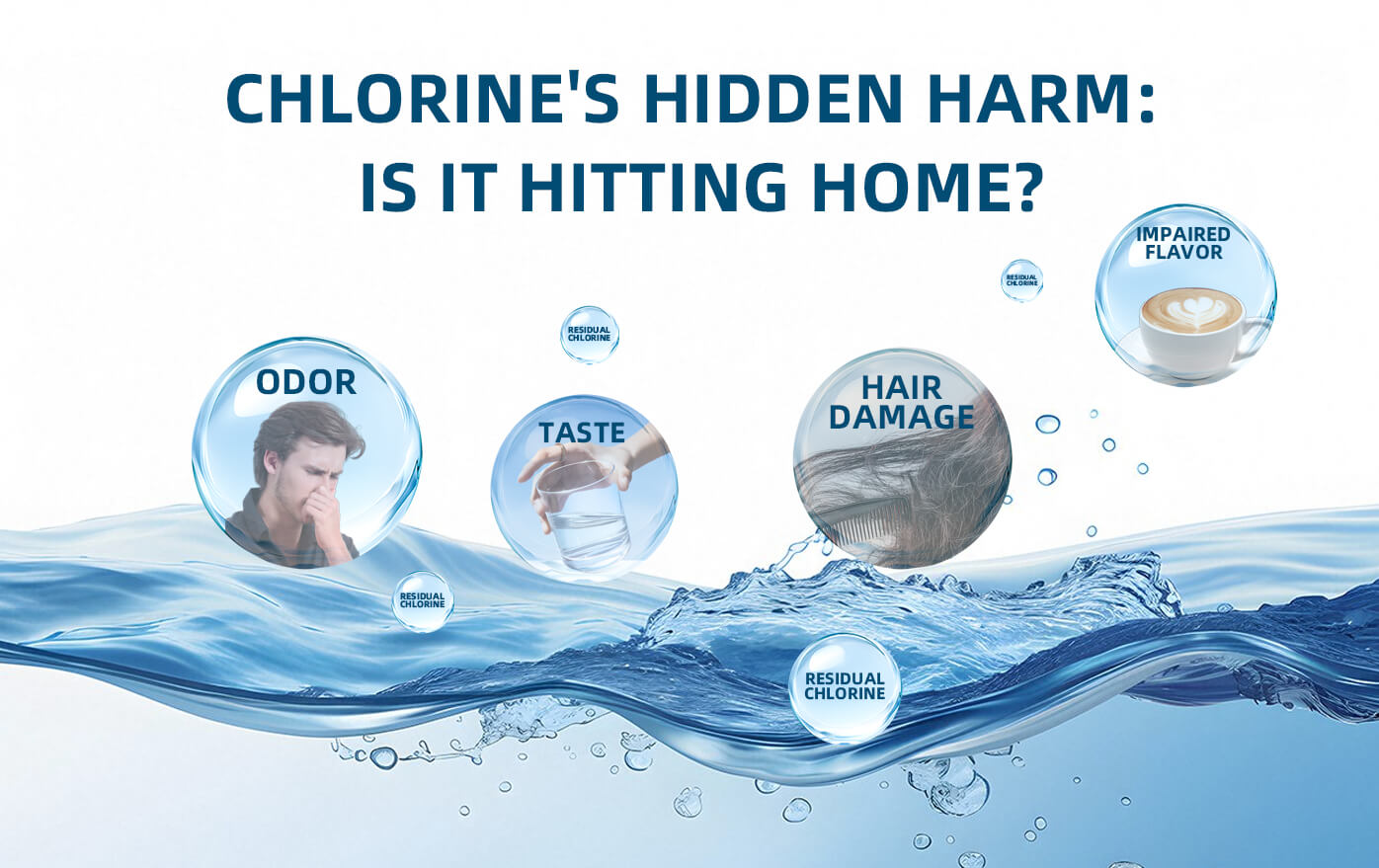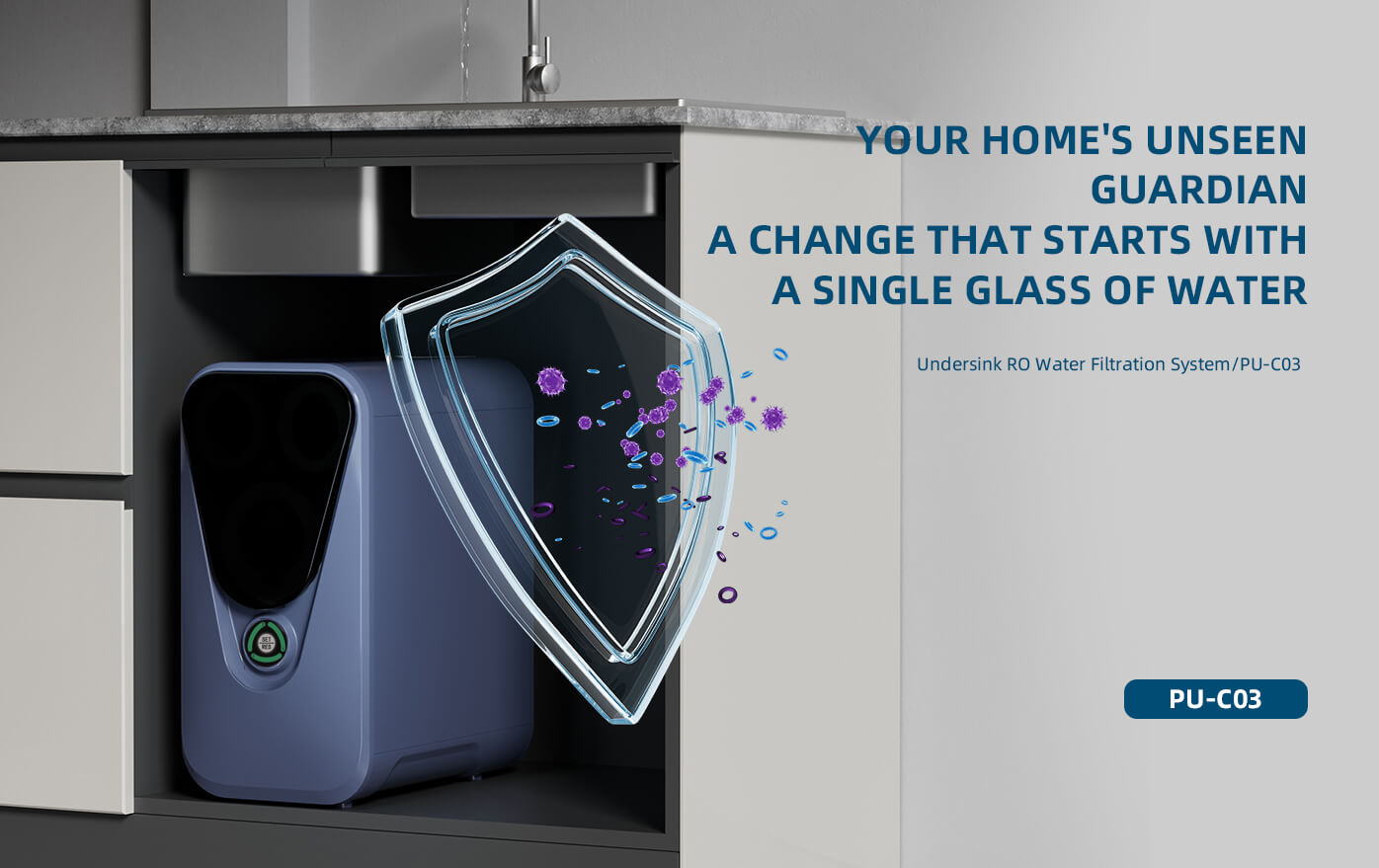
In most urban households, tap water remains the primary source for drinking, cooking, and cleaning food ingredients. To ensure water is not contaminated by bacteria during transmission, chlorine is often added as a disinfectant. While chlorine safeguards the baseline of water safety, it inevitably leaves behind residual chlorine. Unlike rust or sediment that can be seen with the naked eye, residual chlorine is invisible—yet it subtly affects many aspects of daily life.
The “Invisible” Impact of Residual Chlorine
Taste and Odor: This is the most immediate effect. Residual chlorine produces a bleach-like smell, altering the taste and odor of tap water, making it unpleasant to drink directly.
Damage to Hair and Skin: Residual chlorine can denature surface proteins in hair and skin, leading to dry, frizzy, or faded hair (especially color-treated hair), as well as tightness and dryness of the skin.
Impact on Beverages and Food: When tap water is used to make tea or coffee, the chlorine disrupts the natural aroma of the leaves and beans. Washing fruits and vegetables or cooking with chlorinated water may also slightly alter the original flavors of food.
The oxidizing property of residual chlorine not only compromises the taste and mouthfeel of water but also accelerates the wear and tear of household appliances. More concerningly, when it reacts with organic matter in water, it may form trihalomethanes (THMs) and other byproducts. Long-term intake of these substances could pose potential health risks.

The Limitations of Traditional Methods to Remove Residual Chlorine
Many households are aware of the residual chlorine in tap water and try different ways to deal with it. Some leave water on the balcony for a few hours or boil it before drinking. While these methods can reduce chlorine levels to some extent, they are far from thorough. Sun exposure takes time and risks recontamination from dust in the air, while boiling, though convenient, does not completely eliminate the harmful byproducts.
Some families also turn to water filter pitchers. With built-in activated carbon filters, these pitchers are more effective than sunning or boiling, but they come with limitations: the filter lifespan is short, requiring frequent replacements, and the filtration capacity is relatively limited—only addressing part of the residual chlorine issue.
Under-sink RO Water Filtration system: A One-Step Solution
Because of these limitations, more households are now shifting to comprehensive water purification systems, especially under-sink reverse osmosis (RO) filtration systems. Compared with traditional chlorine-removal methods, their advantages are clear:
More Thorough Filtration: With a precision of up to 0.0001 microns, the RO membrane not only removes residual chlorine but also filters out heavy metals, microorganisms, and other harmful substances—providing complete purification from the source.
Stable and Convenient Supply: Unlike filter pitchers, under-sink filtration systems are directly connected to the kitchen tap. Clean water is available instantly without waiting, and the filter cartridges have a much longer lifespan, ensuring consistent performance.
Versatile Usage: An under-sink RO filtration system is not just for drinking water. From washing rice and cooking to rinsing fruits or brewing tea, filtered water reduces the impact of residual chlorine across all aspects of daily life.
Long-Term Cost-Effective: While the initial investment is higher, the long-term cost is lower compared with constantly buying bottled water or replacing pitcher filter cartridges. It’s also a more eco-friendly choice.

The New Water Trend of 2025
In the past, people’s expectations for drinking water were simple—as long as it was drinkable, that was enough. But in recent years, more and more families have realized that differences in water quality are not always immediately visible. Sometimes, it shows only in a bowl of rice that’s a little less fragrant, or in a home appliance that wears out a little faster. Yet it’s precisely these subtle details that, over time, reshape the quality of daily life and the foundation of long-term health.
That is why, in 2025,under sink reverse osmosis water filtration systems are entering more and more homes. They are not just devices, but rather the “invisible guardians” of modern households—keeping unseen risks away from everyday life.
When a bowl of rice regains its familiar aroma, when fruits taste just as sweet and fresh after washing, when your water dispenser no longer carries an unpleasant odor—you’ll realize that purified water is more than just a safeguard for health. It is a way to restore life to its natural state of simplicity and purity.